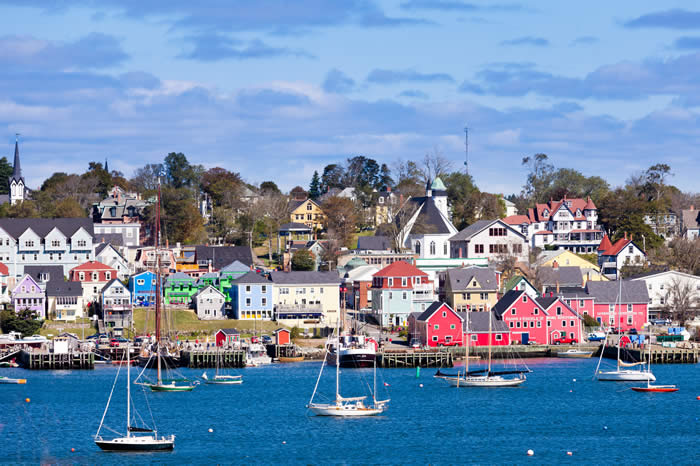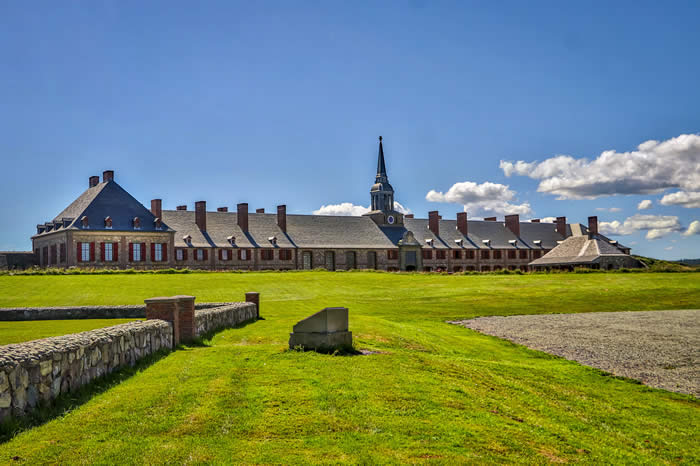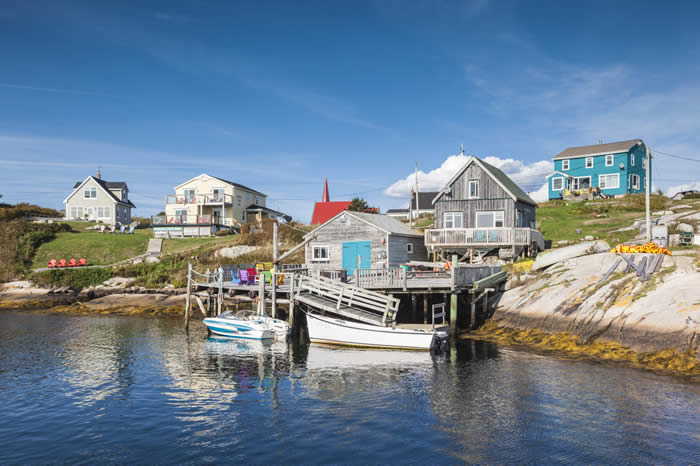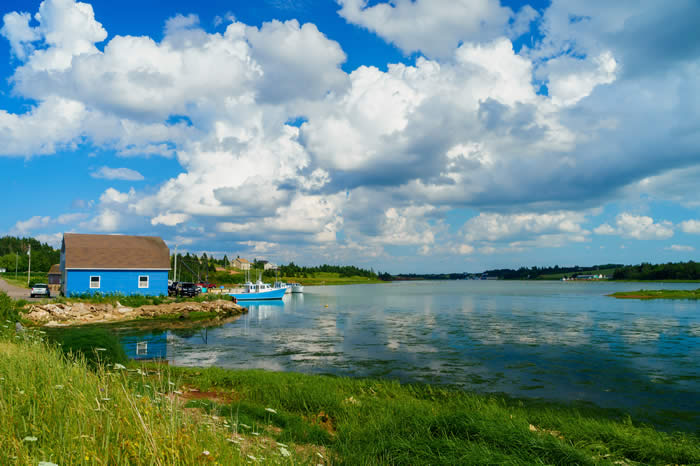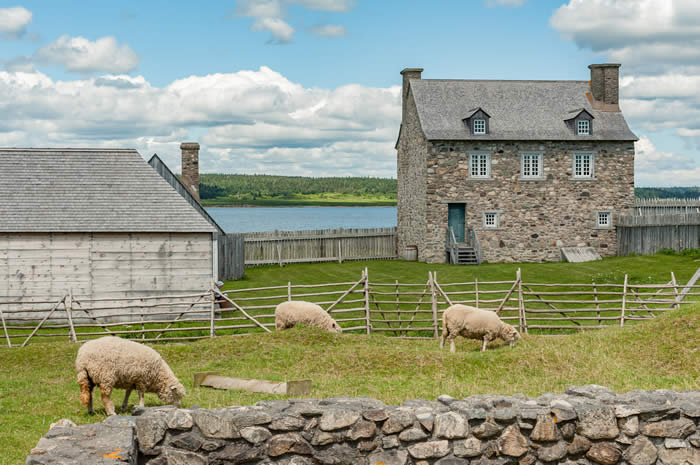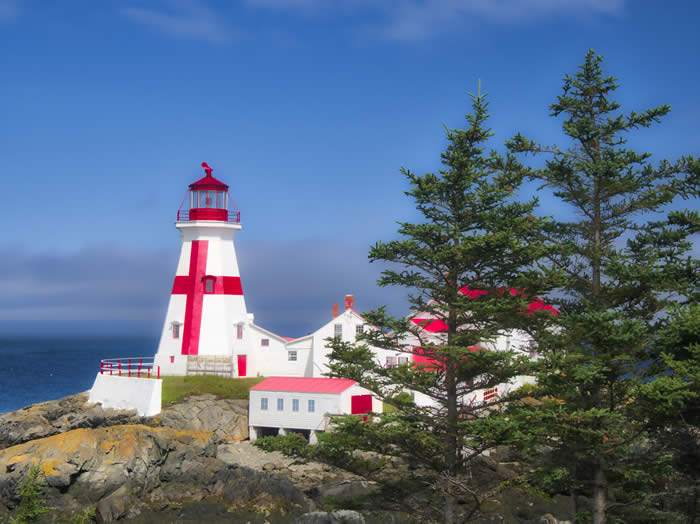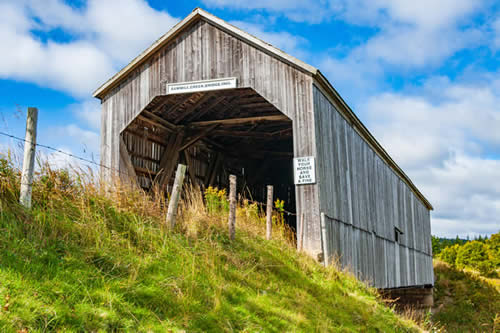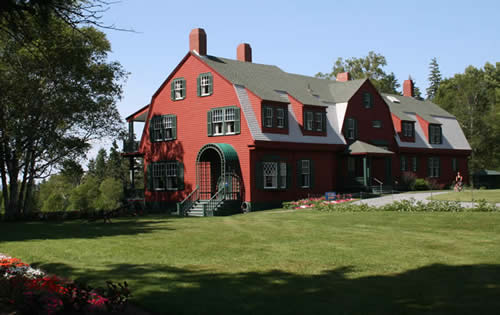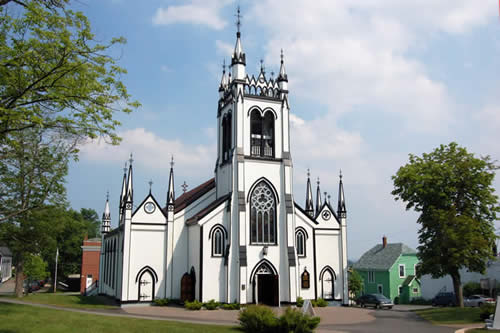| OREGON |
| England |
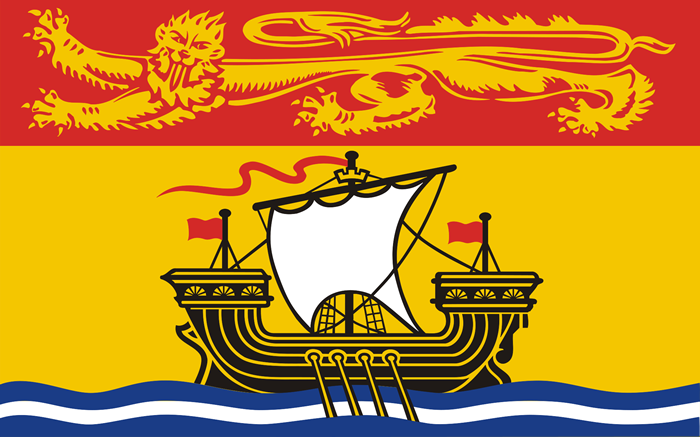 |
The Canadian Maritime Provinces July 7/8-18, 2022 |
This summer discover Canada's Maritime Provinces of Nova Scotia, Prince Edward Island, and New Brunswick. Hightlights will include: two UNESCO world heritage sites - Lunenberg and Grand-Pré; The Cabot Trail on Cape Breton Islan; Campobello Roosevelt International Park to see FDR's summer home; the fabled home of Anne of Green Gables on Prince Edward Island; and the tidal forces of the Bay of Fundy. We hope you can join us next summer on this exciting new tour!
PRE-TOUR OPTION, July 7-8 For those who would like to arrive a day early, we will organize an optional pre-tour excursion to two landmark Halifax sites not included in the main program.
Thursday, July 7 Arrive in Halifax and check into the Sutton Place Hotel.
Friday, July 8 We will visit the Citadel National Historic Site—a 19th-century star-shaped fortification that illustrates the city's role as a key naval station in the British Empire.
We will also tour The Maritime Museum of the Atlantic, Canada’s oldest and largest maritime museum. In addition to telling the history of the Royal Canadian and Merchant Navies, and World War II convoys, the museum also tells the story of famous historical events such as "The Battle of the Atlantic," the Halifax explosion of 1917, Nova Scotia's role in the aftermath of the “Titanic” disaster, various shipwrecks and more.
Joint fellow travelers at this evening's welcome dinner.
MAIN ITINERARY
Friday, July 8 Individual arrivals. Gather with staff and fellow travelers at our welcome dinner. Overnight Sutton Place Hotel, Halifax (R, D)
Saturday, July 9 Local historian Jay White will join us for the day as we explore Nova Scotia’s South Shore.
This morning, we will discover the picturesque village of Lunenburg, a UNESCO World Heritage Site considered the best example of a planned British colonial settlement in North America. Jay will lead us on a walking tour of this colorful historic, seaside town that was established in 1753. Following a tour of the Fisheries Museum of the Atlantic, we will have some free time to explore and for lunch on our own.
On our return to Halifax, we will stop at the quaint fishing village of Peggy's Cove, to see one of the most photographed, lighthouses in Canada—Peggy's Point Lighthouse. Overnight Sutton Place Hotel, Halifax
Sunday, July 10 As we leave Halifax, we will stop at the site of the horrific Halifax Explosion. On the morning of December 6, 1917, the SS Mont-Blanc, a French cargo ship laden with high explosives, collided with a Norwegian vessel causing massive explosion that destroyed the Richmond district of Halifax, killing 2000 people and injuring 9000 others. We will also make a brief visit to nearby Fairview Lawn Cemetery where over one hundred passengers of the RMS Titanic were laid to rest.
We will stop for lunch on our own at the Hector Heritage Quay in the town of Pictou. The Interpretation Centre here tells the story of the 18th-century Scottish migration to the New World and how Pictou came to be dubbed the “Birthplace of New Scotland.” The quay is the home to a full-size replica of the three-masted ship, which is sometimes referred to as “Canada’s Mayflower.” The 189 Scottish emigrants, who spent over 11 weeks at sea on the Hector in 1773, were the first Scottish settlers who emigrated directly from Scotland to Nova Scotia.
Then we will travel across the Canso Causeway and continue to the town of Baddeck. Check into our hotel for a three-night stay. Overnight Auberge Gisele’s Inn (D)
Monday, July 11 A local guide will join us for the day as we explore the scenic Cape Breton Highlands National Park and drive a portion of the famous Cabot Trail, 185 miles of paved road that traverses the northern tip of Cape Breton. A local guide will tell us the history of the Acadians who settled on this beautiful island. We will make several stops to marvel at the natural beauty of this rugged landscape and stunning stretches of coastal wilderness. We will also see several Celtic communities and make a stop at the French Acadian village of Cheticamp, famous for its beautiful, hooked rugs.
Tonight, we will attend a Ceilidh (Pronounced “kay-lee”), a get together featuring story tellers and local musicians playing the fiddle or bagpipes. Overnight Auberge Gisele’s Inn (B ,L)
Tuesday, July 12 Today we will travel to the remarkable Fortress Louisbourg National Historic Site. Construction began in 1720 and by the mid-1740s the Louisbourg Fortress, was one of the most extensive (and expensive) European fortifications in North America. Two and a half miles of wall surrounded the entire fort.
A Parks Canada interpreter will tell us the history of the fort and the role it played in the struggle between the French and the British for control of what today is Canada. Living historians in period dress help one imagine life here in the 18th century. We will visit the town tavern, the King’s Bakery, the armory, forge, and chapel. One quarter of the fortress has been reconstructed over the past 50 years; it is the largest historical reconstruction project in North America. Overnight Auberge Gisele’s Inn (B ,L, D)
Wednesday, July 13 This morning, we’ll visit the home of Cape Breton’s most famous resident, Alexander Graham Bell (1847-1922). The inventor fell in love with Cape Breton in 1855 and evenutally built a vacation home in Baddeck. We will learn about the many accomplishments of the man who invented the telephone on a behind-the-scenes tour of the museum, including his efforts to teach the deaf to speak.
We will travel to Caribou where we will catch the ferry to beautiful Prince Edward Island. We will disembark at Wood Island, PEI, and drive to Charlottetown to check into our hotel for a two-night stay. Overnight: The Hollman Grand Hotel (B, D)
Thursday, July 14 Our host for the day is local historian Jack DesRoches. After taking us on a walking tour of Charlottetown, we will travel with Jack to Cavendish to visit the fabled home of Anne of Green Gables, the inspiration for Lucy Maud Montgomery’s novels. At Green Gables Heritage Place, Park Canada staff will discuss its history and the significance of the books to Canadian literature.
We will walk along a white sand beach, and admire red sandstone cliffs, forests, and rolling dunes as we travel through Prince Edward Island National Park. The Park is the finest example of sand-dune ecosystems in Atlantic Canada and is home to protected nesting sites of the endangered Piping Plover. Overnight: The Hollman Grand Hotel (B,L)
Today we depart PEI and drive across the Confederation Bridge to New Brunswick. At Hopewell Rocks Provincial Park, we will learn about the force of the Bay of Fundy’s massive tides. We will see over 20 rock pillars, some that stand four stories high, affectionately dubbed “the Flowerpot Rocks.” Over thousands of years, powerful tidal waters have sculpted and carved these remarkable rock features. We will learn why the world’s highest tides (reaching over 46 feet above sea level) are found in the Bay of Fundy.
On our drive along the New Brunswick coast, we will see several covered bridges, sheer seaside cliffs, and dense forests. In St John’s we will stop to marvel at the impressive Reversing Falls. Overnight: The St. John Hilton Hotel (B, L)
Saturday, July 16 This morning, we will travel to Campobello Roosevelt International Park. FDR spent summers on Campobello, his “Beloved Island,” from the age of one through adulthood. We’ll tour the 34-room “cottage” that he acquired in 1909 and used as a summer retreat until 1939. We will also experience “Tea with Eleanor,” where guides share stories about Mrs. Roosevelt and her accomplishments. Overnight: The St. John Hilton Hotel (B, L, tea)
Sunday, July 17 We will take the morning ferry from St. John to Digby, NS. We will take a guided tour of the UNESCO World Heritage Site, Grand-Pré (meaning great meadow). Here we will learn about Le Grand Dérangement, when the British forcably removed thousands of French Acadians from Nova Scotia, New Brunswick, and Prince Edward Island. The expulsion (1755-1764) took place during the French and Indian War and was part of the British military campaign against New France. Many French Acadians migrated to Louisiana and became the ancestors of modern-day Cajuns. We will toast our Maritime adventure at this evening’s farewell dinner. Overnight the Hilton Garden Inn, Halifax Airport (B, L, D)
Monday, July 18 Individual Departures.
PROGRAM INCLUDES: * Services of local historian guides for full day tours of Lunenburg/Peggy's Cove, Cape Breton, PEI * Services of private ranger led tours of Fortress Louisbourg, Campobello, and Grand Pre * A Ceilidh (an evening of Celtic music) COST: 11 DAYS/10 NIGHTS Single Occupancy: $4290 (NOTE: All costs are based on a minimum of 20 participants.)
|
